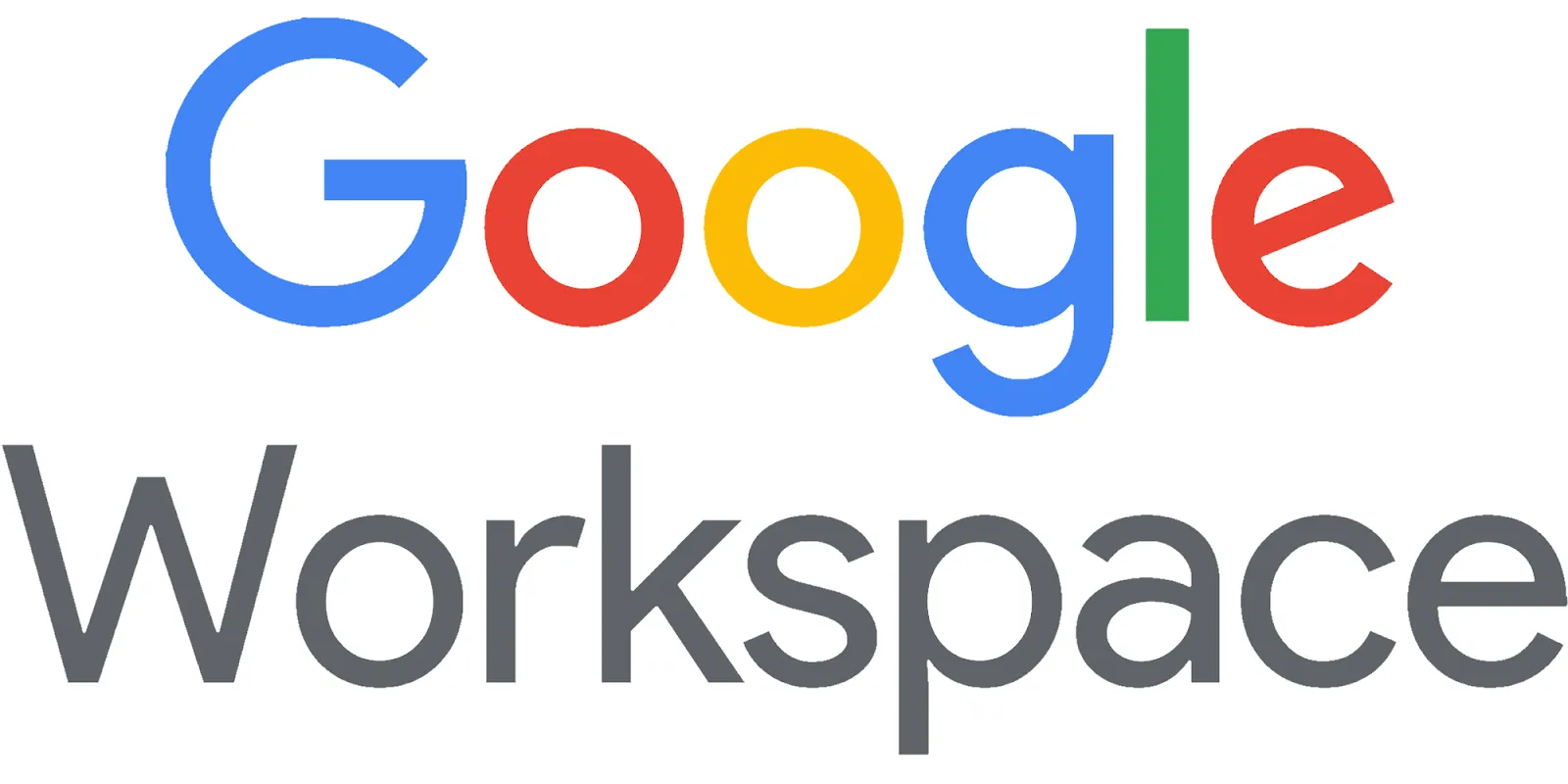What is Google Workspace?

What is Google Workspace?
Google Workspace, formerly known as G Suite, is a comprehensive suite of cloud-based productivity and collaboration tools developed by Google. Designed to meet the needs of businesses, educational institutions, and individuals, Google Workspace integrates a variety of applications that facilitate communication, organization, and efficiency in both personal and professional environments.
Overview of Google Workspace
Google Workspace offers a unified platform that includes familiar applications such as Gmail, Google Drive, Google Docs, Google Sheets, Google Slides, Google Meet, and more. These tools are accessible from any device with internet connectivity, enabling users to work seamlessly from anywhere in the world. The suite is built to support real-time collaboration, ensuring that teams can work together efficiently, regardless of their physical locations.
Key Components of Google Workspace
1. Gmail
Gmail is Google's robust email service tailored for business use. It offers custom email addresses (@yourcompany.com), advanced spam filtering, and powerful search capabilities. Additionally, Gmail integrates seamlessly with other Google Workspace apps, allowing users to manage their communications and collaborate on projects without switching platforms.
2. Google Drive
Google Drive serves as the central hub for file storage and management within Google Workspace. It provides ample cloud storage space, ensuring that users can securely store, access, and share their documents, spreadsheets, presentations, and other files from any device. Drive's integration with Google Docs, Sheets, and Slides enables real-time collaboration, allowing multiple users to edit documents simultaneously.
3. Google Docs, Sheets, and Slides
These applications are the backbone of Google Workspace's productivity tools. Google Docs allows for word processing, Google Sheets for spreadsheets, and Google Slides for presentations. All three applications support real-time collaboration, commenting, and version history, making it easy for teams to create, review, and refine documents together.
4. Google Meet and Chat
Google Meet is a secure video conferencing tool that supports high-quality virtual meetings, webinars, and remote collaboration sessions. Google Chat complements Meet by providing instant messaging capabilities, enabling teams to communicate quickly and efficiently through direct messages or group chats. Together, these tools facilitate seamless communication within organizations.
5. Google Calendar
Google Calendar helps users manage their schedules, plan events, and set reminders. It integrates with other Google Workspace apps, allowing users to schedule meetings directly from Gmail or Google Meet. Shared calendars enable teams to coordinate schedules, book meeting rooms, and ensure that everyone stays informed about upcoming events and deadlines.
Advantages of Using Google Workspace
1. Enhanced Collaboration
Google Workspace is designed with collaboration in mind. Multiple users can work on the same document simultaneously, see each other's changes in real-time, and communicate through integrated chat and comment features. This level of collaboration fosters teamwork and accelerates project completion.
2. Accessibility and Flexibility
With Google Workspace, users can access their tools and files from any device with internet access. Whether working from the office, home, or on the go, Google Workspace ensures that productivity is maintained without being tied to a specific location or device.
3. Security and Compliance
Google Workspace prioritizes security with features like data encryption, two-factor authentication, and advanced threat protection. Administrators can manage user access, set security policies, and ensure compliance with industry standards and regulations such as GDPR and HIPAA.
4. Scalability
Google Workspace is scalable to accommodate businesses of all sizes, from small startups to large enterprises. With various pricing plans and the ability to add or remove users as needed, organizations can easily adjust their Google Workspace subscriptions to match their growth and evolving needs.
5. Integration with Third-Party Applications
Google Workspace integrates with a wide range of third-party applications and services, allowing organizations to customize their workflow and enhance productivity. From project management tools to CRM systems, these integrations help streamline processes and improve overall efficiency.
Google Workspace Plans and Pricing
Google Workspace offers several pricing tiers to cater to different business needs:
- Business Starter: Ideal for small businesses, this plan includes custom email, 30 GB cloud storage per user, and access to core Google Workspace apps.
- Business Standard: Offers enhanced features such as 2 TB cloud storage per user, advanced security controls, and additional collaboration tools.
- Business Plus: Provides even more storage (5 TB per user), advanced security and management features, and enhanced support options.
- Enterprise: Tailored for large organizations, this plan includes unlimited storage, advanced security and compliance features, and premium support.
Each plan is designed to scale with your business, offering flexibility in terms of features and pricing to ensure that you only pay for what you need.
Setting Up Google Workspace
Getting started with Google Workspace is straightforward. Here's a brief overview of the setup process:
1. Sign Up
Visit the Google Workspace website and choose a plan that suits your business needs. You'll need to provide basic information about your organization and select a domain name for your custom email addresses.
2. Verify Your Domain
To use your custom domain with Google Workspace, you'll need to verify ownership. This typically involves adding a TXT record to your domain's DNS settings.
3. Create User Accounts
Once your domain is verified, you can start creating user accounts for your team members. Assign roles and permissions based on their responsibilities within the organization.
4. Configure Settings
Access the Google Admin console to configure settings such as security policies, data retention, and application access. Customize the environment to align with your organization's requirements.
5. Migrate Data
If you're transitioning from another platform, Google Workspace provides tools to migrate your existing emails, contacts, and files seamlessly.
Managing Google Workspace
Effective management of Google Workspace ensures that your organization leverages its full potential. Key aspects of management include:
1. User Management
Administrators can add, remove, and manage user accounts through the Google Admin console. This includes setting permissions, managing group memberships, and overseeing user access to various applications.
2. Security Management
Implement robust security measures by configuring two-factor authentication, monitoring for suspicious activity, and setting up data loss prevention (DLP) policies to protect sensitive information.
3. Application Management
Customize the suite by enabling or disabling specific applications based on user roles and organizational needs. Integrate third-party applications to extend functionality and streamline workflows.
4. Monitoring and Reporting
Utilize the reporting tools available in the Admin console to monitor usage, track security incidents, and generate insights into how Google Workspace is being utilized across the organization.
Enhancing Productivity with Google Workspace
Google Workspace offers numerous features and tools designed to boost productivity:
1. Real-Time Collaboration
Collaborate with team members in real-time on documents, spreadsheets, and presentations. This eliminates the need for back-and-forth email exchanges and ensures that everyone is on the same page.
2. Automation with Google Apps Script
Automate repetitive tasks and integrate workflows using Google Apps Script. This scripting platform allows you to create custom functions, automate data processing, and connect different Google Workspace apps.
3. Advanced Search and Organization
Utilize Google's powerful search capabilities to quickly find emails, documents, and other files. Organize your workspace with folders, labels, and shared drives to keep everything structured and accessible.
4. Task Management
Manage tasks and projects efficiently with tools like Google Tasks and integration with Google Keep. Assign tasks, set deadlines, and track progress to ensure that projects stay on track.
Google Workspace vs. Competitors
When evaluating productivity suites, it's essential to consider how Google Workspace compares to other offerings like Microsoft 365:
Google Workspace
- Cloud-native with seamless real-time collaboration
- Intuitive and user-friendly interface
- Strong integration with Google's ecosystem
- Flexible pricing plans suitable for various business sizes
Microsoft 365
- Robust desktop applications alongside cloud services
- Extensive features for advanced users
- Strong integration with Windows and other Microsoft products
- Enterprise-grade security and compliance options
Both suites offer powerful tools, and the choice often depends on specific business needs, existing infrastructure, and user preferences.
Security and Privacy in Google Workspace
Google Workspace places a strong emphasis on security and privacy to protect user data:
1. Data Encryption
All data stored in Google Workspace is encrypted both in transit and at rest, ensuring that information remains secure against unauthorized access.
2. Two-Factor Authentication (2FA)
Enhance account security by requiring a second form of verification in addition to passwords. This significantly reduces the risk of account breaches.
3. Security Center
The Security Center provides administrators with tools and insights to monitor and manage security across the organization. Features include security health analytics, threat detection, and actionable recommendations.
4. Compliance Certifications
Google Workspace complies with various international standards and regulations, including GDPR, HIPAA, and ISO/IEC 27001. This ensures that organizations can meet their compliance requirements while using the platform.
Support and Resources
Google Workspace offers extensive support and resources to help users get the most out of the suite:
1. Help Center
The Google Workspace Help Center provides comprehensive documentation, tutorials, and troubleshooting guides covering all aspects of the suite.
2. Community Forums
Users can engage with the Google Workspace community through forums where they can ask questions, share experiences, and receive advice from other users and experts.
3. Training and Certification
Google offers training programs and certifications to help users and administrators develop their skills and demonstrate their proficiency with Google Workspace tools.
4. Premium Support
For organizations requiring additional assistance, Google Workspace offers premium support options that include 24/7 access to support teams, faster response times, and dedicated account managers.
Future of Google Workspace
As technology continues to evolve, Google Workspace is poised to incorporate new features and enhancements that leverage advancements in artificial intelligence, machine learning, and automation. Future developments may include:
1. AI-Powered Features
Integration of AI to provide smarter suggestions, automate routine tasks, and enhance productivity tools with features like predictive text, intelligent scheduling, and data analysis.
2. Enhanced Collaboration Tools
Development of more sophisticated collaboration features that facilitate seamless teamwork, such as advanced project management tools, virtual whiteboards, and immersive meeting experiences.
3. Expanded Integrations
Further integration with third-party applications and services to create a more interconnected and customizable workspace tailored to specific business needs.
4. Improved Security Measures
Continuous enhancements to security protocols and compliance features to address emerging threats and evolving regulatory requirements.
Conclusion
Google Workspace is a versatile and powerful suite of tools designed to enhance productivity, collaboration, and efficiency in various settings. Its cloud-based nature ensures accessibility and flexibility, while its robust security features protect sensitive data. Whether you're a small business, a large enterprise, or an educational institution, Google Workspace offers scalable solutions that can be tailored to meet your specific needs. By leveraging its comprehensive set of applications and continuous innovations, organizations can streamline their workflows, foster collaboration, and drive success in an increasingly digital world.
Related Articles
- What is Google Workspace?
- Core Applications and Features
- Advantages of Google Workspace
- Google Workspace Plans and Pricing
- Google Workspace Setup and Management
- Collaboration and Teamwork with Google Workspace
- Boosting Productivity with Google Workspace: Tips and Tricks
- Comparison of Google Workspace with Other Business Software
- Google Workspace Security and Privacy
- Google Workspace Education and Support
- Success Stories and User Experiences with Google Workspace
- Future Trends and Google Workspace









Comments
Post a Comment